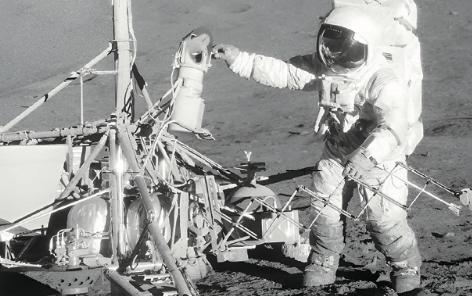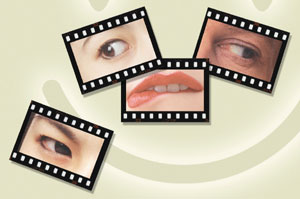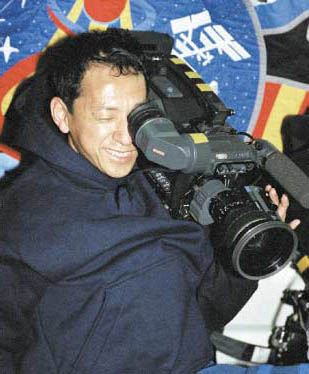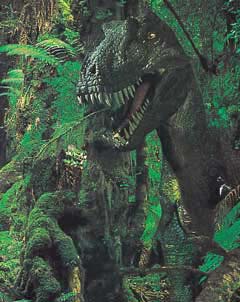커다란 강을 따라 여행하는 것도 하나의 교육이 된다. 일주일 동안 살펴본 최근 허드슨 강의 생태는 많이 나아져 있었으며, 대부분 기대 이상의 아주 낙관적인 상태였다.
이번 여행은 맨하탄의 선창에서부터 시작되었다. 허드슨강을 오르기 전, 배는 강의 끝부분인 뉴욕항을 순회하였는데, 강은 여기서 스태튼 섬과 브룩클린 사이에 있는 베라자노 해협을 지나 대서양으로 흘러 들어간다. 특정오염 물질을 버리는 행위를 금지하는 법규 덕으로 최근 몇 년 동안 강은 매우 깨끗해졌다. 필자도 항구에서 악취가 나던 때를 기억하고 있지만 더 이상 그렇지 않다.
이 항구가 더이상 아무것도 살 수 없는 오염된 곳이 아니게 된 것은 좋은 일이지만, 이 때문에 또 다른 부작용도 생기게 되었다. 이 '깨끗한'항구에는 구멍벌레라고 불리는 무척추동물이 교각을 지탱하는 나무말뚝을 공격한다. 어떤 것은 림노리아속(屬)의 바닷니(虱)와 같이 아주 조그맣다. 이 동물은 나무의 표면을 조금씩 갉아먹는다. 배좀벌레 조개류의 좀조개라 불리는 이 2피트 길이의 연체 동물은 구멍을 파서 나무의 내부로 들어간다. 플라스틱으로 나무 말뚝을 감싸는 식으로 구멍벌레를 몰아내거나 이미 손상된 교각에 버팀목을 대는 일을 하려면 뉴욕시는 수백만 달러를 지출해야 할 것이다.
전력생산과정에서 민물고기가 다치게 되기도 한다. 우리가 인디안 포인트 원자력 발전소를 지나쳐 올 때 그 지역은 마치 다른 행성에서 날아온 듯 환상적인 빛에 쌓인 것같이 보였다. 원자력이든 아니든 간에 강가에 있는 발전소는 터빈으로 물고기를 빨아들여 죽이게 된다. 터빈에서 물고기가 죽으면 발전소에도 좋지 않으며 물고기에게도 치명적이기 때문에, 과학자들은 물고기를 위험한 지역에 오지 못하게 쫓아버리는 방법을 연구해왔다.
가장 혼한 방법으로는 흡수관으로 들어오는 물고기를 그물로 잡아서 다시 강으로 던져버리는 것이 있다. 인디안 포인트 발전소 구역에서 행하는 물고기 걸러내기 작업에만도 1천7백만 달러가 소요되며 종종 물고기를 죽이기도 한다. 가장 최근의 기술은 냉전 기간동안 수중음파 탐지기로 잠수함을 탐색하는데 주력해 온 코넥티컷의 소날리스트사에서 개발한 '물고기 충격장치'를 이용해 물고기를 쫓아내는 것이다. 우리는 당장 수중 확성기와 플래시를 결합하여 물고기를 보호할 수 있는데 이는 그물보다 비용이 적게 든다.
허드슨 강을 따라가면 고기들이 수면 위로 뛰어오를 때의 첨벙거리는 소리를 들을 수 있는데, 실로 많은 물고기가 이 강에 살고 있다. 베어 산 아래 적막한 부두에 밤새 정박해 있는 동안, 우리는 아시아계 어린이들이 낚시로 게를 아주 잘 잡는 것을 보고 놀랐다. 지금은 허드슨 강에서 잡은 게와 물고기를 먹을 수 있으며 여기로 청어가 몰려들 때면 뉴욕 레스토랑들은 한 몫을 본다.
하지만 어떤 물고기들은 아직도 식용으로 삼기에 위험하다. 폴리염화비페닐에 의해 오염된 강 밑바닥에 사는 고기들이 그러하다. PCB는약 20년 전, 그것이 금지되기 전까지 냉각제로 사용되었다. 이 물질은 선천성 결손과 암을 발생시키는 것으로 추정되어왔다. PCB가 진짜 무서운 이유는 이 물질이 화학적으로 안정되어 있어서 결코 사라지지 않고 계속해서 지구를 오염시킨다는 점이다. 대부분의 호수와 강들은 아직도 PCB에 오염되어 있다. 해결책이라면 공업폐기물을 없애고 생석회를 쏟아붓는 것이라고 믿어져 왔으나, 나중의 실험들이 최초의 실험 결과를 확인시켜주지 못했다. 과학자들은 아직도 담수계에서 PCB를 걸러내기 위한 방법을 찾고 있다.
미국 에너지국의 올슨 박사는 최근 방사능 추적기를 이용하여 강에 있는 오염물질의 흐름을 그려냈다. 일반적으로 강은 육지에서 흘러넘친 빗물에 의해 오염되고, 바다로 오염물질을 흘려보낸다고 생각되어왔다. 그러나 올슨 박사에 의해 바닷물 스스로가 강으로 역류를 일으킨다는 사실이 밝혀졌다. 염수가 조수간만의 차이로 들어오는 뉴욕의 포키프시 아래에 있는 이 지역은 허드슨 강에서도 두드러진 지역이다. 올슨은 자유의 여신상 가까이에 있는 뉴욕항구 바닥으로부터 침전토양을 채취하여 연대를 추정해본 결과 어떤 오염물질은 도시로부터가 아니라 1백 50마일이나 떨어진 해양으로부터 왔다는 것을 알게 되었다.
문제가 어떻든 강을 따라서 하는 여행은 아름답다. 맨하탄 섬의 상류 끝에서 시작되는 허드슨 강의 기슭은 푸르게 우거져 있다. 늪지와 기슭을 따라서 물고기를 잡는 두루미와 왜가리를 볼 수 있다. 긴 목을 가진 검은 가마우지들이 엄청나게 많이 물 위를 낮게 날고, 물 위로 솟아나온 어디에나 내려 앉는다. 그 위에서 가마우지는 방수처리가 되지 않은 날개를 펼쳐 말려야 한다.
여러 나라에서 사람들은 가마우지를 낚시할 때 조수로 이용한다. 펠리칸의 사촌인 가마우지는 먹이 주머니를 목에 가지고 있어서, 테 하나만 목에 씌우면 잡은 고기를 삼키지 못한다. 직업적인 낚시꾼들은 이 배고픈 새들의 수가 증가하는 것을 걱정한다. 최근 물가 근처에 사는 가마우지가 토해낸 뼈들을 연구한 '어류 및 야생동물 보호국'에 따르면 가마우지는 달팽이와 대합조개를 포함한 모든 것을 먹는 것으로 밝혀졌다. 이는 가마우지들이 우리들이 즐기는 청어와 연어만 집중적으로 먹지는 않는다는 것을 말해준다. 그렇다면 가마우지도 우리와 함께 강에서 즐겁게 살도록 내버려 둘수도 있을 것이다.
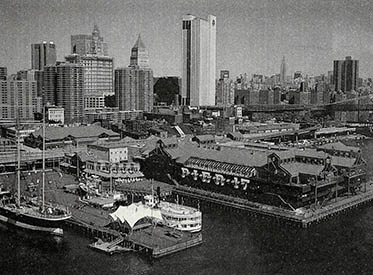
A trip on a major river is an education. The week I just spent on the Hudson River brought out several recent developments in river ecology, most more optimistic than I had expected.
My trip began at a dock in Manhattan. Before going up the Hudson, the boat circled the river's end — New York harbor, which empties into the Atlantic ocean beyond the Verra-zano narrows between Staten Island and Brooklyn. The harbor has been much cleaner in recent years, thanks to regulations forbidding the dumping of certain pollutants into the river. I can remember when the harbor smelled, but it doesn't any more.
It's good to have a harbor that is no longer so polluted that nothing can live in it, but this has side effects. In a "clean" harbor, invertebrates called bore worms attack the wood pilings that support the piers. Some are tiny, like gribbles, a crustacean of the genus Limnoria. These nibble away at the wood's surface. Two-foot-long mollusks called shipworms, of the family Teredinidae, bore into the inside of the wood. New York City must now spend millions trying to keep the borers out by wrapping wood pilings with plastic and shoring up those piers already damaged.
Then there are the new ways of generating electricity that hurt river fish. We sailed past the Indian Point nuclear power stations at night, when they seemed like fantastic lighted shapes from another planet. Unfortunately, river power stations (nuclear or not) tend to suck in fish, which are killed by the turbines. Since this is bad for the power plant and fatal for the fish, scientists have worked to find ways of repelling fish away from the danger.
The most common technique is to trap the fish entering the water-intake system and flush them out into the river. These "screens" at the Indian Point plants cost $17 million each, and they often kill fish anyway. The newest technique is to scare the fish away with "Fish Startle," developed by a Connecticut firm called Sonalysts, Inc., which during the Cold War had specialized in tracking submarines with sonar. Now we can protect fish with a combination of underwater loudspeakers and strobe lights, less expensive than screens.
All along the Hudson there were splashes as fish broke the surface, so there are indeed many fish living in the river. When our boat halted for the night at a lonely dock beneath Bear Mountain, we surprised a group of Asian youngsters fishing, successfully, for crabs. It is now possible to eat crabs and fish taken from the Hudson River, and New York restaurants do good business during the shad run in spring.
Some fish may still be dangerous to eat. These are mostly bottom feeders contaminated by polychlorinated biphenyls. PCBs, until they were banned about 20 years ago, were used as coolants. They are thought to cause birth defects and cancer. The truly horrible aspect of PCBs is that they do not go away, for the chemical is stable, continuing to contaminate the planet. Most lakes and rivers are still polluted by PCBs. It was believed a solution had been found by removing sludge and pouring quicklime into it, but later tests did not confirm the results of the original experiments. Scientists are still looking for ways to clean fresh water systems of PCBs.
Dr. Curtis Olsen, with the U.S. Department of Energy, has recently mapped out the flow of contaminants in rivers, using radioactive tracers. It was thought that rivers were polluted by run-off from the land and that they emptied their own pollutants into the ocean. Olsen found that the ocean itself causes a backward flow into a river. This is especially prominent in the Hudson River, which is a salt-water tidal estuary below Poughkeepsie, N.Y.Olsen took sediment cores from the bottom of New York harbor near the Statue of Liberty, dated them, and found that some of its pollution came not from the city but from the ocean and a source 150 miles away.
Problems aside, river travel is beautiful. The banks of the Hudson, beginning at the upper end of Manhattan island itself, are green and wooded. Cranes and herons can be spotted fishing along the edges and in the marshy parts. Dark, snake-necked cormorants in astonishing numbers fly low over the water and perch on anything jutting from the river. With wings that are not waterproof, the cormorant must spread them out to dry.
In many countries, people use cormorants as fishing helpers. Cormorants have neck pouches (being cousins of pelicans) so a collar will prevent the bird from swallowing its catch. Here, commercial fishermen tend to worry about the increasing numbers of these hungry birds. Bones regurgitated by cormorants living near fresh water were recently studied by the U.S. Fish and Wildlife Service. Cormorants appear to eat everything, including snails and clams, which means they don't concentrate on the shad and salmon we favor. Perhaps we can bring ourselves to let cormorants live and enjoy the river with us.
(c) 1993, Los Angeles Times Syndicate





